

Ben Zachariah
CarExpert's top five ute reviews of 2025
1 Hour Ago
The Isuzu D-Max makes sense at the top end of the range, and it makes sense in base SX guise. Sure, you miss some of the tinsel, but there's no getting away from the fact this is a very good ute.
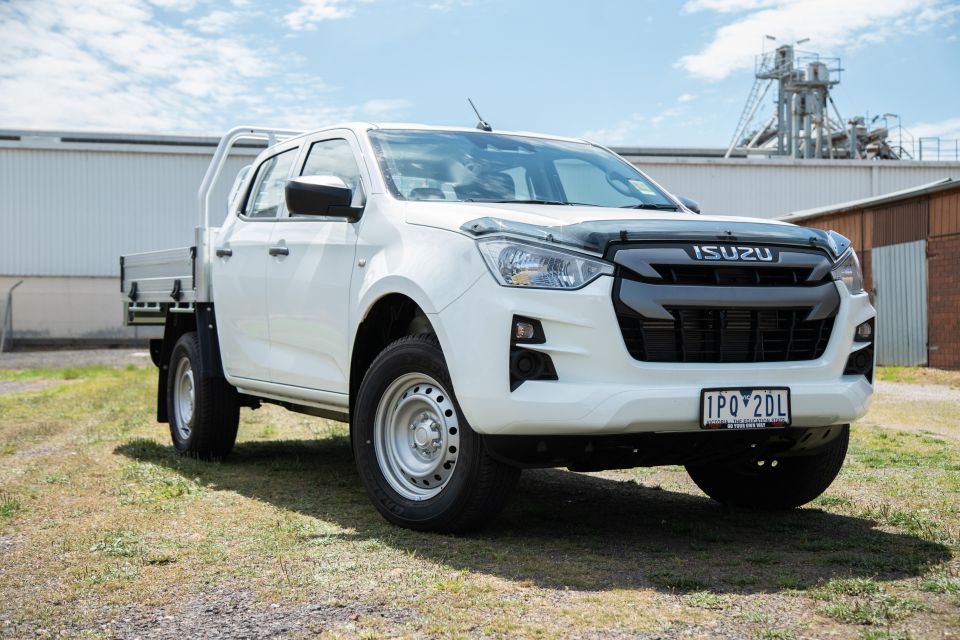
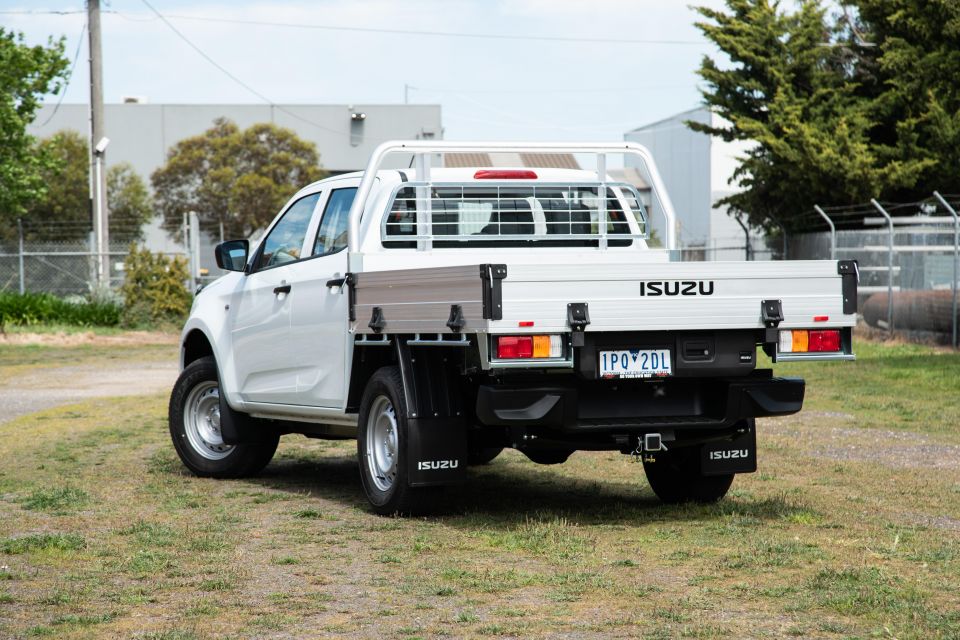

Contributor
New from
$49,900
excl. on-roads

Contributor
New from
$49,900
excl. on-roads


Contributor
New from
$49,900
excl. on-roads

Contributor
New from
$49,900
excl. on-roads
Quickly see how this car stacks up against its competition. Select any benchmark to see more details.
Where expert car reviews meet expert car buying – CarExpert gives you trusted advice, personalised service and real savings on your next new car.
The range-topping Isuzu D-Max X-Terrain and LS-U have quite rightly captured all the attention since launching, but not everyone needs swollen wheel arches, leather seats, and a big infotainment screen.
Isuzu has a strong reputation for reliability and sharp pricing, which makes it a popular pick for fleet operators after a dual-cab ute.
That’s where the D-Max SX on test here comes in. Like the rest of the D-Max range, it’s been treated to a comprehensive overhaul for 2021 with a full suite of active safety systems, a new iteration of the company’s famous 3.0-litre turbo-diesel engine, and a more refined drive in the city.

The SX trades the tough exterior trims and big wheels for a subdued design and steelies, and subs the plusher interior for a cabin trimmed in reassuringly hard plastic.
Don’t let the lack of tinsel fool you, though. The 2021 Isuzu D-Max is an excellent ute, even without all the bells and whistles.
The cheapest D-Max SX is the single-cab 4×2 with a manual, priced from just $29,990 drive-away.
Our tester was an automatic dual-cab 4×4 cab chassis, which bumps the price to $42,200 before on-road costs. You’ll note there’s no low-rider option, only the high-rider with its off-road-ready ground clearance.

Isuzu says it wasn’t worth calibrating its expansive suite of active driver aids to work with the low-rider given the low take-up rate, and instead only offers the D-Max with a taller ride.
The SX sits below the LS-M ($51,000 before on-roads), LS-U ($53,900 before on-roads), and X-Terrain ($58,990 drive-away) in the Isuzu D-Max range.
Buy your new car without the stress. It's fast, simple and completely free.

Great service from Travis and team, second time I have used this business would not hesitate to recommend them to anyone
Craig C.
Purchased a Ford Ranger in Sunshine Coast, QLD
CarExpert helped Craig save thousands on his Ford Ranger, now let us save you on your next new car.
Find a dealAs with higher-end D-Max models, the equipment highlights in the SX mostly fall into the safety category.
The whole range features autonomous emergency braking, forward collision warning, lane-departure warning, lane-keeping assist, turn assist, wrong-pedal acceleration prevention, traffic sign monitoring, blind-spot monitoring, and driver attention monitoring.
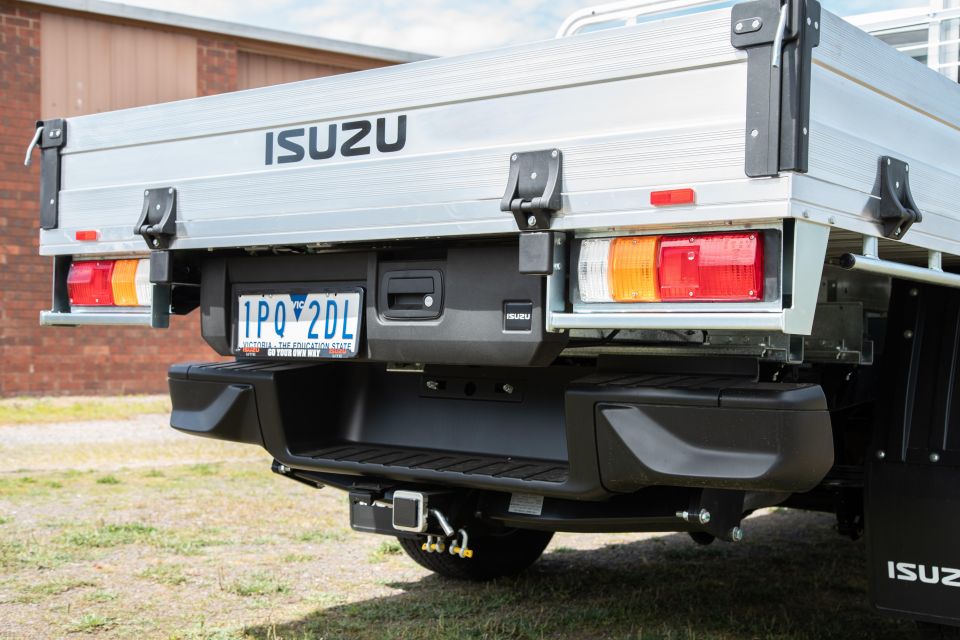
There’s also niceties such as automatic headlights and high-beam, which is a step on given the previous-generation D-Max wouldn’t even switch off its lights when you turned the car off.
There’s a 7.0-inch infotainment screen with AM, FM, and DAB radio, Bluetooth connectivity, wireless Apple CarPlay, and wired Android Auto smartphone mirroring. Sitting between the dials is a 4.2-inch trip computer display.
The seats are trimmed in the most basic cloth Isuzu has to offer, there’s regular manual air conditioning, and the car rides on 17-inch steel wheels.
The 2021 Isuzu D-Max was the first ute to be tested against ANCAP’s tougher new criteria and score a five-star rating.
That rating was based on an adult occupant protection score of 83 per cent, a child occupant protection score of 89 per cent and a safety assist score of 81 per cent. Vulnerable road user protection testing yielded a score of 69 per cent.
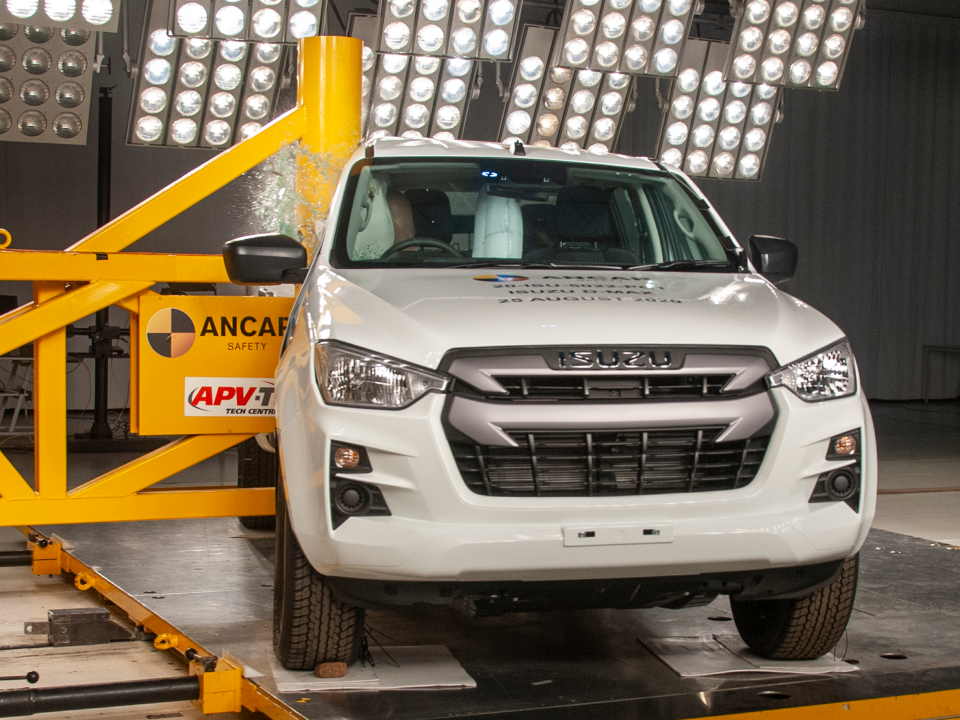
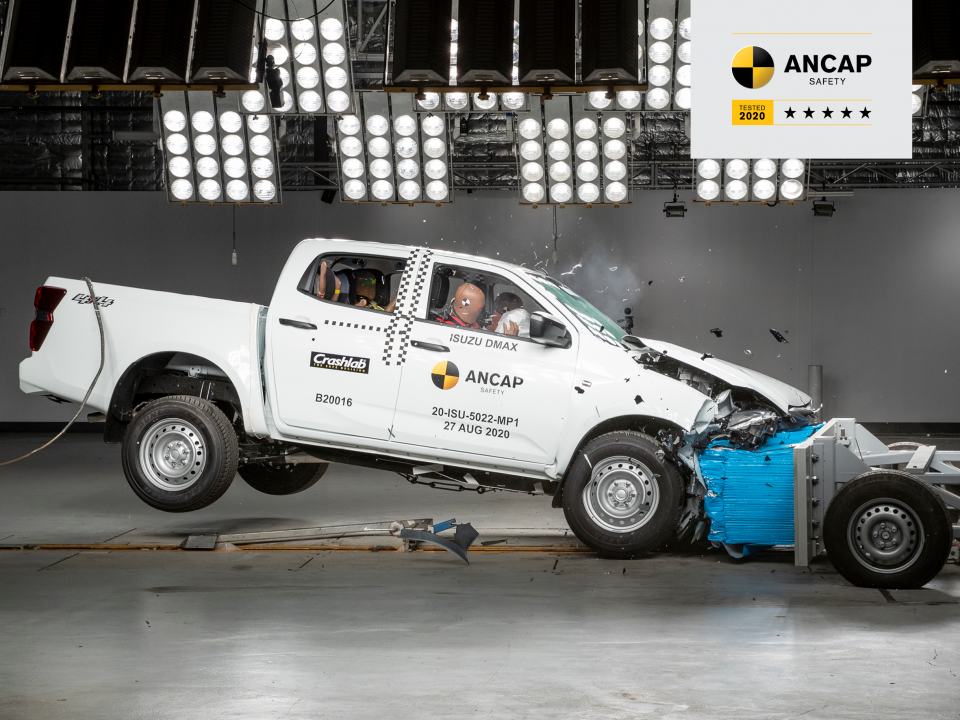
Every single D-Max model – even the base single cab-chassis, as mentioned before – features standard autonomous emergency braking, forward-collision warning, turn assist, traffic sign recognition, lane-departure warning, lane-keeping assist, blind-spot monitoring, rear cross-traffic alert, and adaptive high-beam.
There are also eight airbags, including one between the two front occupants.
Worried the D-Max had forgotten its roots as a utilitarian, work-focused ute? Don’t be.
There’s more technology than before, sure, but the materials are still hard-wearing, the design is still dominated by black plastic, and all the buttons can be pressed by a weathered, glove-wearing hand.
I’m a bit of a sucker for a basic ute. The way everything in the D-Max SX looks, feels, and smells will be reassuring if you are too.
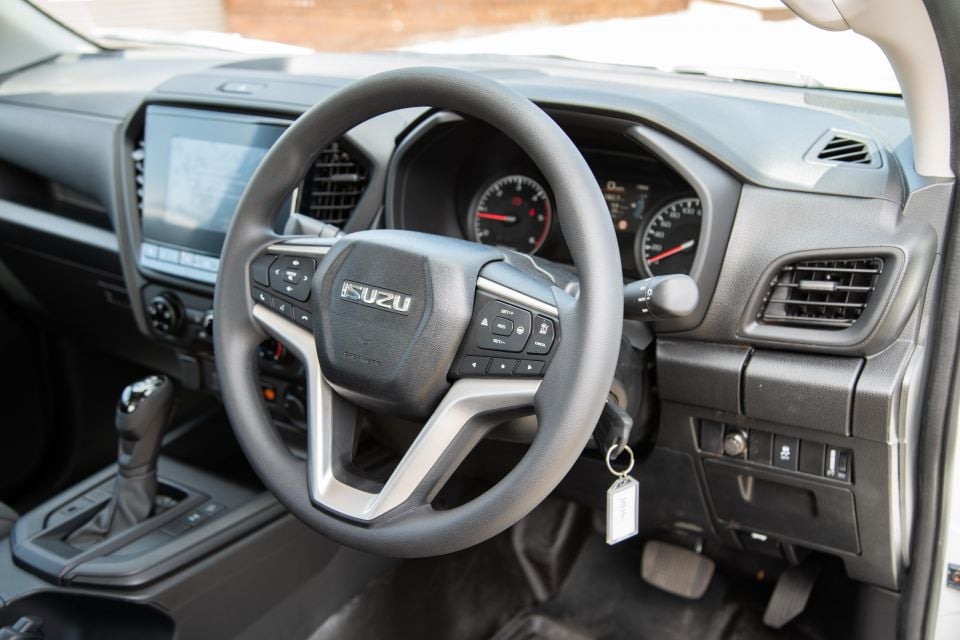
That’s where the similarities with the old D-Max end, though. The driving position in the 2021 SX is excellent for taller drivers, with bags of adjustment in the seat and (finally) a steering wheel that adjusts for both reach and rake.
Speaking of the seats, even with basic cloth they’re surprisingly supportive. There’s just the right amount of bolstering, although the scalloped-out backrest means there’s not quite as much lumbar support as would be ideal.
Isuzu has kept the pop-out cupholders on the outer edges of the dashboard for 2021 – a good thing given the central cupholders swallow a small coffee cup whole, with nothing protruding for the driver to grab onto.
Our base SX didn’t have the pop-up storage compartment atop its dashboard, nor a split glovebox like higher-end models. The centre bin is deep though, and there’s plenty of space in the door pockets.
Rear legroom is par for the dual-cab ute class, as is toe-room. There’s plenty of headroom for taller rear passengers though, with space for six-foot-seven me to sit back there without ruffling my hair.
Kids (or troublesome apprentices) will appreciate the fact there’s air vents, too.
The second row folds upwards at its base to reveal storage beneath the seat, and the seat back folds to access a shared top tether point. ISOFIX points are also available on the two outboard seats.
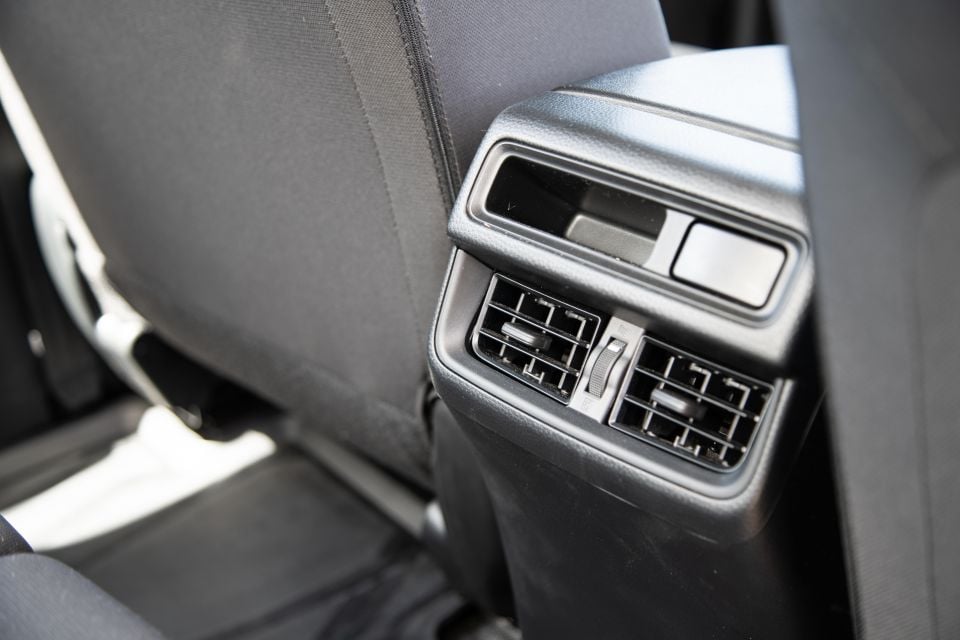
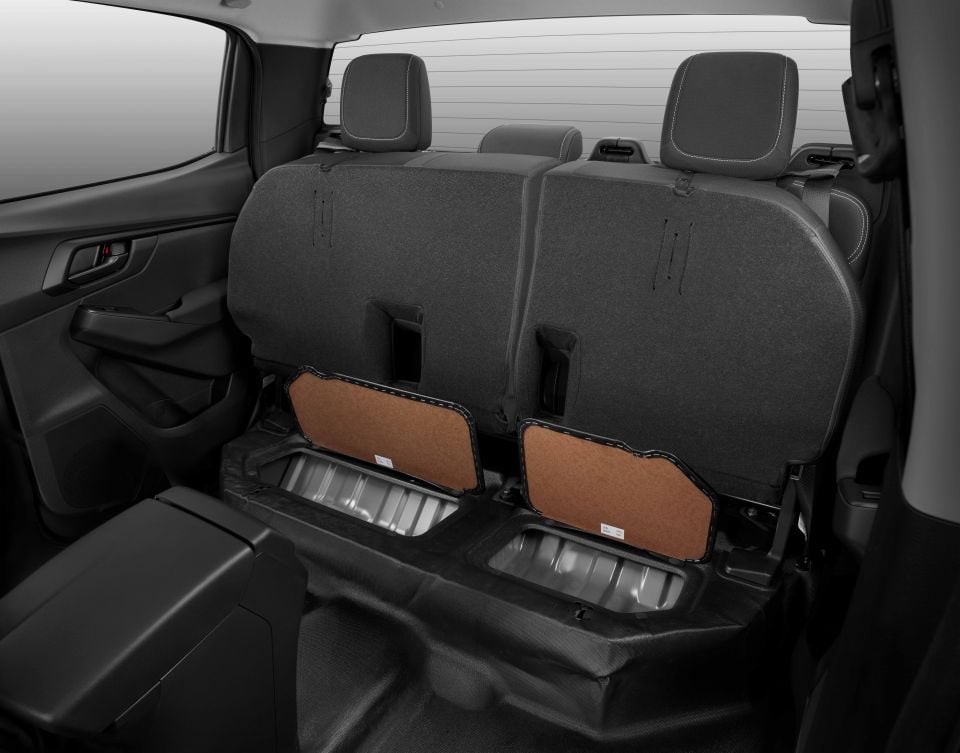
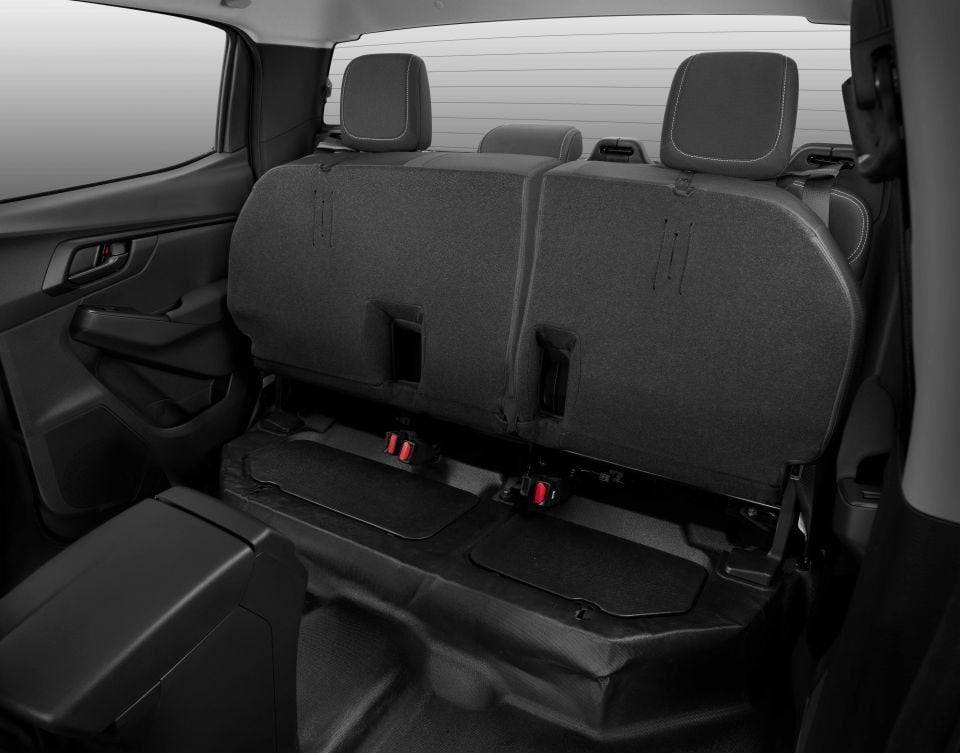

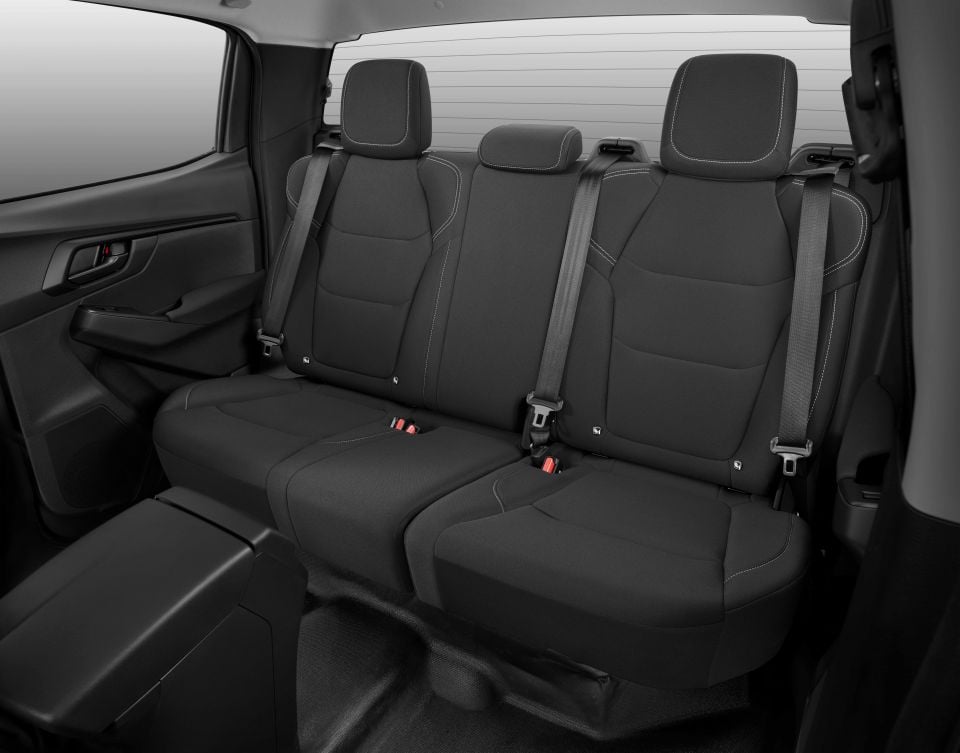
We also loved the inclusion of a hook behind the passenger seat for shopping bags and other bits and pieces that have a habit of flying around the cabin.
There’s nothing particularly offensive about any of the touch points (although padded armrests would be nice) and the compact steering wheel is nice to hold, with logically laid-out buttons.
Facing the driver are two simple, clear analogue dials, between which sits a colour 4.2-inch trip computer display. With a digital speedo, fuel economy data, details about your four-wheel drive mode, and menus for the car’s active safety systems, it’s functional without being overly flashy.

The central infotainment system is similar. Unlike more expensive models with their 9.0-inch displays, the SX has a 7.0-inch system which looks a bit small given it’s slotted into the same housing as the larger screen.
With no satellite navigation the home screen is a simple display allowing you to pick from audio sources, but it responds sharply, has relatively crisp graphics, and is set high enough that it’s easy to reach without taking your eyes too far off the road.
The real highlight is wireless Apple CarPlay. Rather than having to take your phone out of your pocket and fumble around with a USB cable, it automatically activates when you hop into the car.
There’s a slight delay – it usually takes 30 seconds or a minute to find your phone and activate CarPlay – but the fact it all happens in the background means you could conceivably use Apple smartphone mirroring all the time, only interacting with the factory system when you want to change radio station.
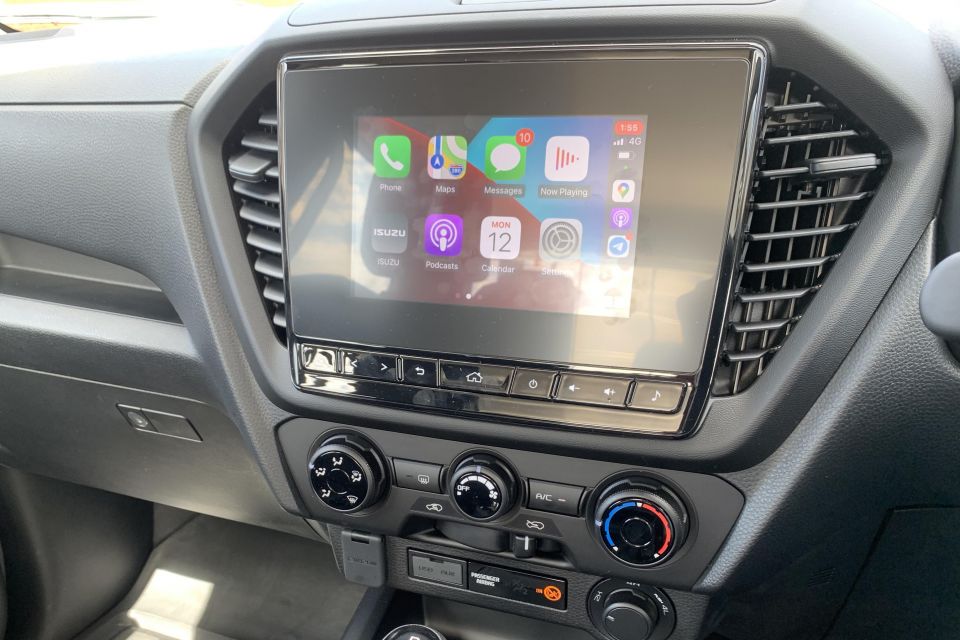
Use an Android phone? You’ll need to plug in, unfortunately.
There are a few quirks to the technology. The clock on the trip computer isn’t linked to the infotainment system, which is annoying (but only twice a year, admittedly), and the fact Isuzu has opted for volume buttons instead of a knob is a miss.
Our tester was fitted with a heavy-duty alloy tray ($2,406.80 from Isuzu), measuring 1800mm long and 1777mm wide. It also had a neat sliding lockable box neatly integrated into the area under the tray, capable of holding up to 100kg.
Power in the D-Max comes from a 3.0-litre four-cylinder turbo-diesel engine. Sounds familiar, but plenty has changed.
The new 4JJ3-TCX engine produces 140kW of power and 450Nm of torque (10kW and 20Nm more than the last D-Max), mated to either a six-speed manual or automatic transmission.
The three-pedal transmission is an in-house-developed unit, while the six-speed automatic fitted to our tester is supplied by Aisin.
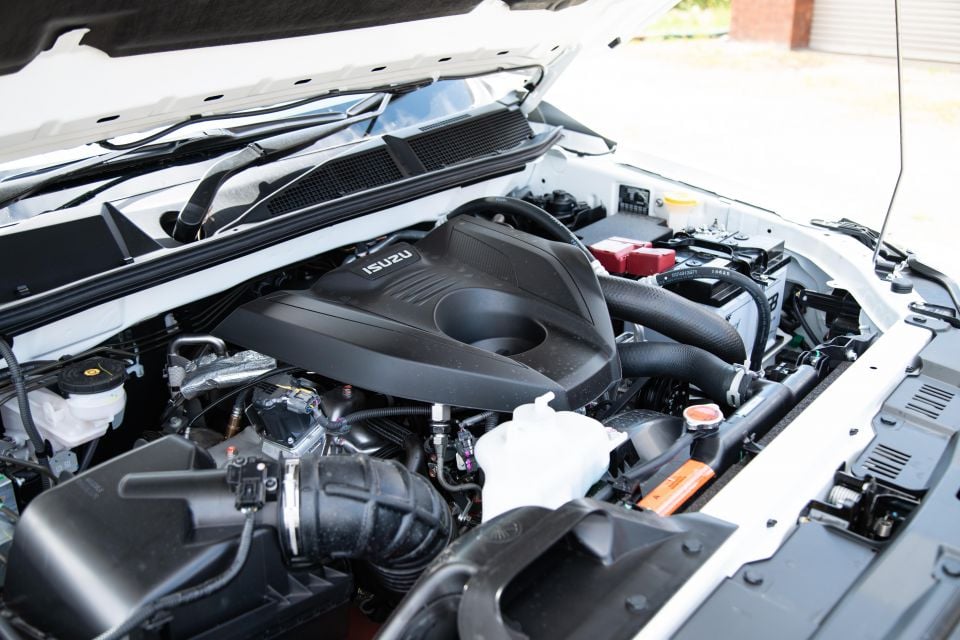
Along with a switchable four-wheel drive system and low-range, the D-Max has a locking rear differential as standard.
Claimed fuel economy comes in at 8.0L/100km on the combined cycle, we saw 9.9L/100km during a week skewed to city driving.
On paper, not much has changed under the bonnet of the new D-Max. In practice, it’s a totally different beast to its predecessor.
Although there’s still a healthy dose of diesel clatter when you cold start it, the new 3.0-litre engine is smoother and quieter than the old unit from behind the wheel.
Peak torque comes on tap at just 1600rpm and sticks around until 2600rpm, so performance is strong from just off idle. But perhaps more impressive is how linear it is. There’s no sense of the turbochargers needing to spool up nor a pronounced shove in the back, just silky smooth performance exactly in keeping with what the driver asks.
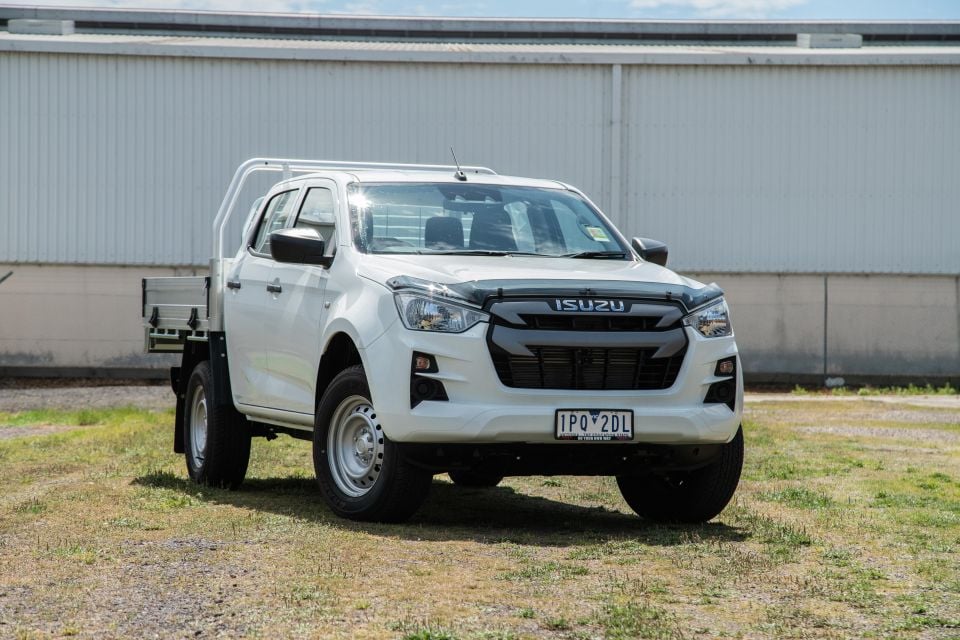
With 300Nm of torque still on tap at 4000rpm, it also doesn’t run out of puff as the mid-range bleeds into the top end. It packs more of a punch than I was expecting given – on paper at least – its figures are impressive rather than class-leading.
The marriage between engine and transmission is also more harmonious than before. The six-speed automatic has new shift points, and has been retuned to lean on the fatter torque curve of the new D-Max rather than hunting around.
As a result it feels more confident and, by virtue of the fact it’s not constantly changing its mind about the best gear on light throttle, smoother on the move. It’s also smart enough to quickly drop a gear going downhill to take advantage of the engine braking.
Shifts using the sequential manual mode are quickly and smoothly executed, but the auto’s calibration makes it largely redundant on the road.
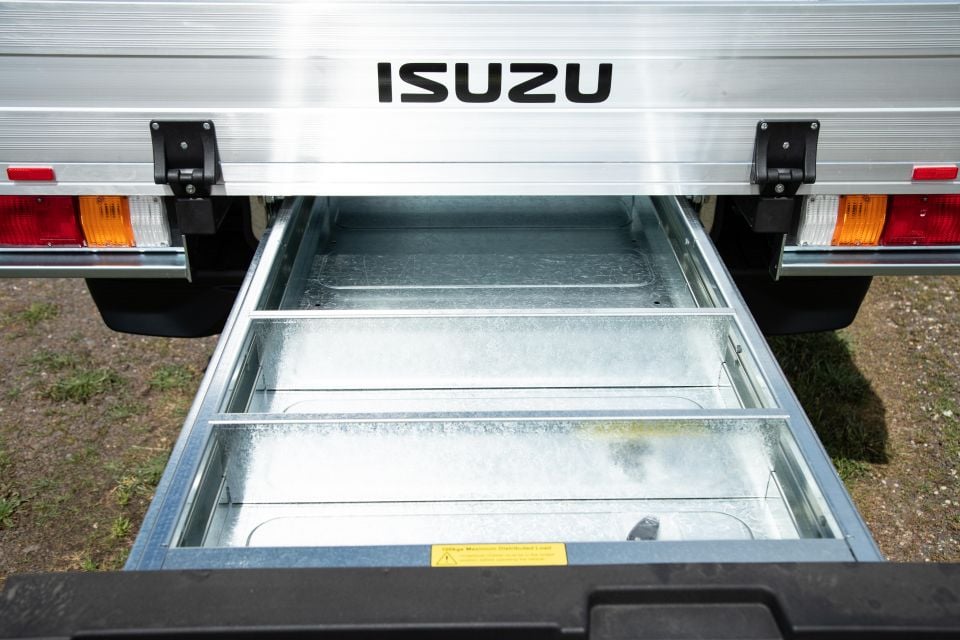
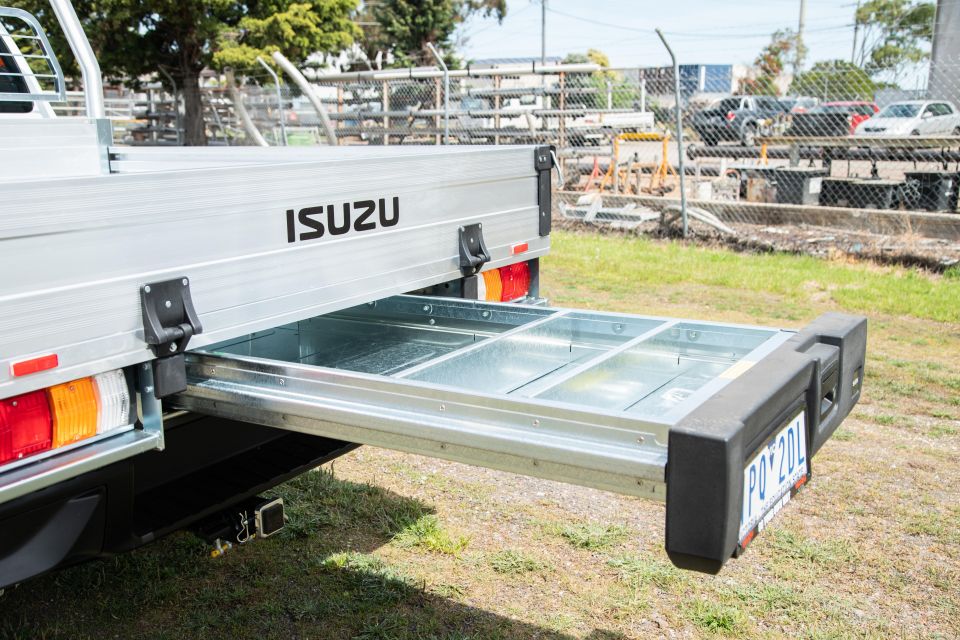
It’s not just the powertrain that’s been to finishing school. The last D-Max had heavy, slow steering that made reverse parking feel like a bicep workout, but the 2021 model is more like an SUV to drive in town thanks to the switch to electric power steering.
It’s fit for Tarzan and Jane which, if you have linguine arms like mine, can only be a good thing.
Despite feeling pinky-twirling light at low speeds, the D-Max doesn’t feel flighty as the speed rises. It’s planted at highway speeds, and doesn’t get blown around by crosswinds. It’s also impressively refined, with hardly any road noise or wind rustle sneaking into the cabin.
The engine can get a bit vocal when you really lean on it, but for the most part it emits little more than a background hum.
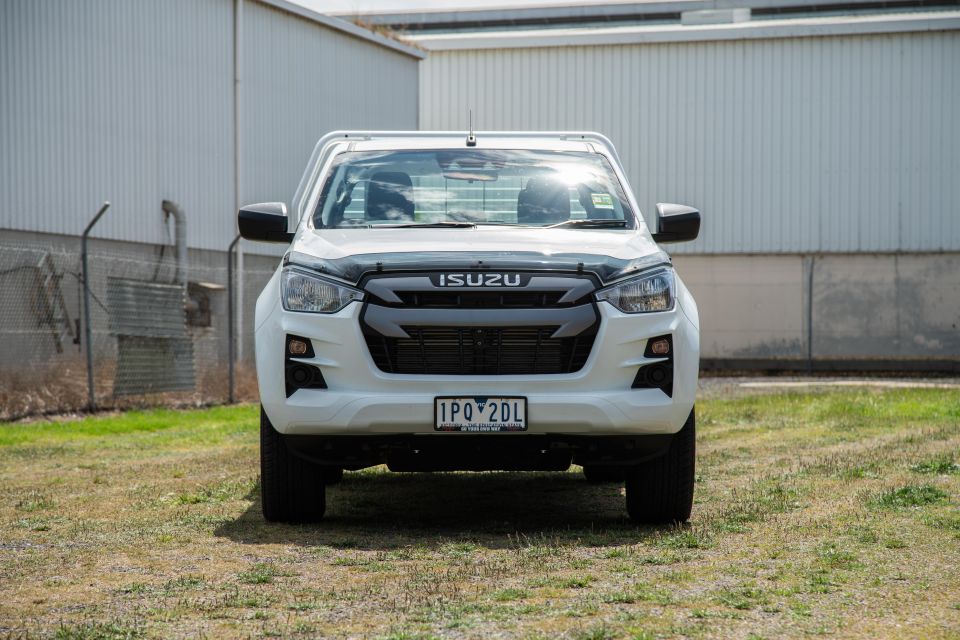
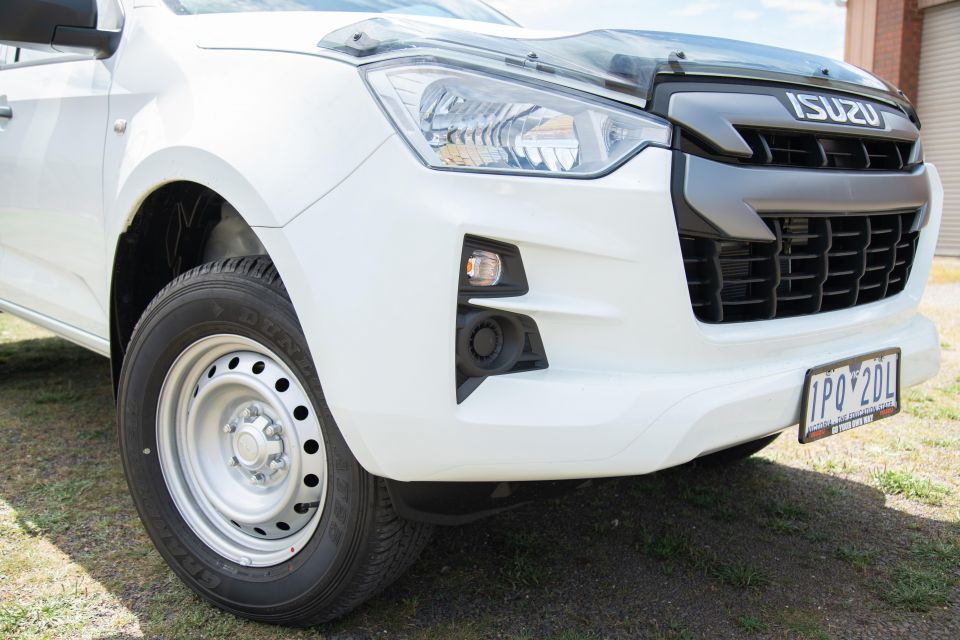
In town, the ride of the SX has some of the brittleness common among dual-cab utes when it’s unladen. It can feel a bit sharp over small bumps, but in isolation it isn’t quite as sharp as some of its rivals. An in-depth back-to-back beckons when restrictions allow.
It settles down as the speed rises, for one of the smoothest highway rides in the ute game.
Braked towing capacity is 3500kg with a 350kg downball load, and payload is 1150kg in this particular guise.
It’s not perfect, the SX, although it is very good. Rear parking sensors are obviously a challenge on a cab chassis, but having them at the front would be handy for squeezing into tight city parking spots.
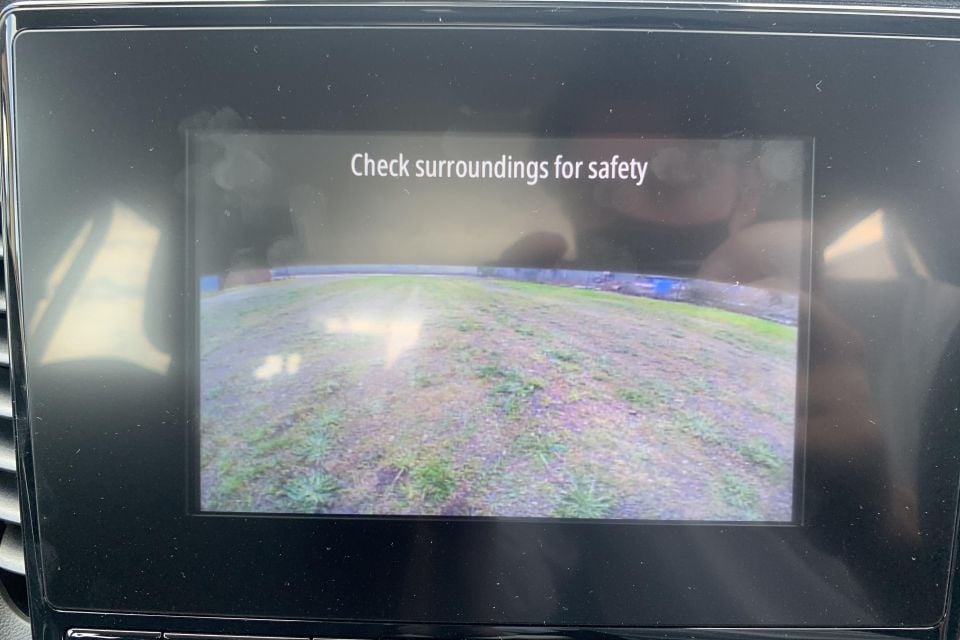
Where expert car reviews meet expert car buying – CarExpert gives you trusted advice, personalised service and real savings on your next new car.
The reversing camera on our tester was also cropped by the toolbox at the top (pictured above) which made it tough to place the rear of the tray. Isuzu says it wasn’t installed correctly in this particular case, and customer cars will have a full, more useful picture.
Isuzu’s suite of active safety features is mostly excellent, especially the lane-keeping assist, but the forward collision warning was a bit jumpy for my liking – occasionally flashing a prominent alarm when there was no risk of an accident, despite being in ‘normal’ mode instead of its more sensitive options.
Isuzu offers the D-Max with a six-year/150,000km warranty, along with seven years of roadside assistance.
Maintenance is required every 12 months or 15,000km as part of Isuzu’s capped-price servicing plan. Over a six-year period the total service cost comes in at $2964, an average of $494 per service.
The Isuzu D-Max SX is a very good ute. There’s not much more to say than that.
Although it doesn’t have the same pumped-up body and fully-featured interior as the headline-grabbing LS-U and X-Terrain, the D-Max SX hasn’t missed out on the important stuff.
The engine is punchy and refined, its town manners are impeccable, and there’s no questioning its safety credentials. Plus, wireless CarPlay and wired Android Auto help paper over the cracks in what’s a fairly basic infotainment system.
Provided the price is right (and remember, fleet pricing doesn’t always match list price), the D-Max SX comes highly recommended.
Where expert car reviews meet expert car buying – CarExpert gives you trusted advice, personalised service and real savings on your next new car.
Scott Collie is an automotive journalist based in Melbourne, Australia. Scott studied journalism at RMIT University and, after a lifelong obsession with everything automotive, started covering the car industry shortly afterwards. He has a passion for travel, and is an avid Melbourne Demons supporter.


Ben Zachariah
1 Hour Ago


Matt Campbell
8 Hours Ago


Derek Fung
4 Days Ago


Damion Smy
7 Days Ago


Ben Zachariah
9 Days Ago


James Wong
15 Days Ago